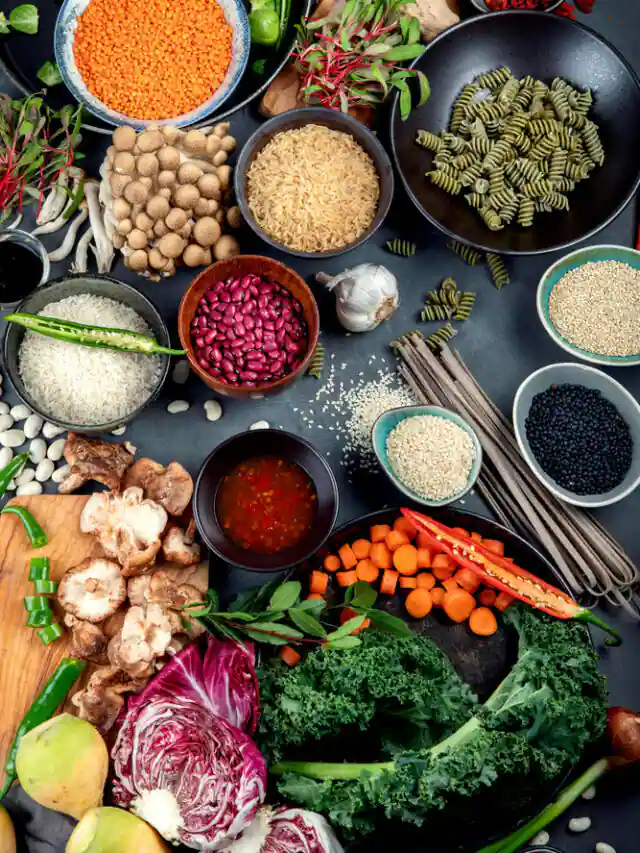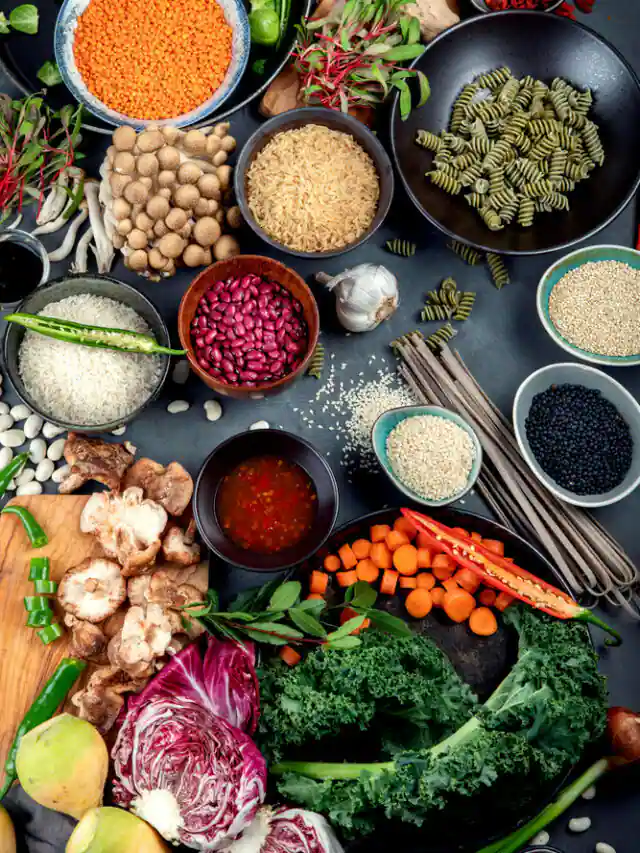Cooking with an oven can be one of the healthiest, most efficient ways to feed a family-whether you’re a busy parent, a home chef experimenting with flavours, a yoga lover prioritizing clean eating, or a money-savvy homemaker stretching the rupee. In this blog post for Mana Vantillu (Our Kitchen) I bring together the perspectives of a nutritionist, chef, mother, life coach, doctor, yoga trainer, utensil-materials expert, foodie and money manager to give you 7 delicious oven recipes that are easy to scale, nutrient-dense, and perfect for modern life.
Below you’ll find the health background, the why and how of oven cooking, cookware recommendations, meal-prep and budget tips – then seven full oven recipes with step-by-step guidance, smart swaps, storage notes, and serving ideas.
Why oven cooking is a healthy choice
Oven cooking-roasting, baking, broiling, slow-roasting or sheet-pan dinners-uses dry heat to concentrate flavours while often requiring less oil than pan-frying. For vegetables and lean proteins, roasting enhances taste and texture and can maintain nutrient density if done thoughtfully (shorter cooks at moderate temperatures). For whole-grain bakes and casseroles, the oven lets you build complete meals in one dish-ideal for portion control and balanced nutrition.
From a lifestyle point of view: oven meals are low-stress for busy households, easy to batch cook, and align well with wellness habits like mindful eating and scheduled meal times. As a money manager would note – oven meals are excellent for stretching ingredients and reducing waste.
Oven cooking benefits – quick checklist
- Less added fat: Roasting caramelizes natural sugars and gives a satisfying texture without drowning food in oil.
- Nutrient retention: Gentle roasting and shielded baking (foil, lids) can preserve vitamins better than long, high-heat frying.
- Time efficiency: Set-and-forget for many dishes; good for multitasking and meal prep.
- Flavor concentration: Maillard reaction and caramelization add depth so you need fewer heavy sauces.
- Batch friendly: Bake for the week-perfect for families and singles alike.
- Safe & easy cleanup: One-pan and sheet-pan recipes simplify washing and reduce clutter.
Essential bakeware & utensil material guide (expert tips)
Choosing the right cookware matters for health, durability and performance:
- Stainless steel: Great for roasting racks and sheet pans; durable and non-reactive.
- Enameled cast iron / cast iron: Excellent heat retention for braises and baked dishes; seasoned cast iron is low-chemical and long-lasting. Avoid acidic foods in unseasoned cast iron unless you enjoy that extra iron.
- Ceramic / stoneware: Even heating and beautiful presentation; choose lead-free, food-safe glazes.
- Nonstick (PTFE): Convenient for low-oil baking, but prefer high-quality, PFOA-free brands and avoid very high heat.
- Silicone molds: Great for baked oatmeal cups and muffins; flexible and easy to clean.
- Glass (Pyrex): Good for casseroles and reheating; retains moisture well.
- Baking sheets: Heavy-gauge (thicker) sheets reduce hotspotting and burning.
Maintenance tip: Avoid thermal shock (don’t put a hot glass dish on a cold surface). Use parchment paper or silicone mats to reduce sticking and lower oil needs.
Health & safety notes from the doctor / nutritionist
- Keep portion sizes balanced – plate half vegetables, one quarter lean protein, one quarter whole grains or starchy veg.
- Use minimal added salt; enhance flavour with herbs, citrus, spices and umami (roasted tomatoes, mushrooms).
- For children, ensure pieces are appropriately sized and check temperature before serving.
- If you have allergies, diabetes, kidney or heart conditions, tailor recipes accordingly and consult your healthcare provider for personalised advice.
Meal planning, money and time-saving hacks
- Cook once, eat twice: Roast a tray of veggies and a protein; use them in bowls, wraps and salads across the week.
- Freeze in portions: Baked oatmeal cups, cooked grains and cooked legumes freeze well.
- Buy seasonal produce: Cheaper, fresher and richer in taste-roasting brings out their best.
- One-pan = less waste: Sheet-pan dinners reduce energy use and cleanup.
- Batch spice mixes: Make a batch of simple rubs/herb blends to speed up cooking and ensure consistent flavour.
The recipes
Each recipe serves 4 (adjust quantities for smaller or larger families). Cooking times include oven preheating.
1. Sheet-Pan Lemon-Herb Salmon with Asparagus & New Potatoes
Why this works: Fast, omega-3 rich, balanced protein + veggies. Great for weeknight dinners or special Sunday meals.
Ingredients:
- 4 salmon fillets (120–150 g each)
- 400 g new potatoes, halved
- 300–350 g asparagus, trimmed
- 2 tbsp olive oil
- Zest + juice of 1 lemon
- 2 garlic cloves, minced
- 1 tbsp chopped fresh dill (or 1 tsp dried)
- Salt & pepper to taste
- Optional: a few lemon slices
Method:
- Preheat oven to 200°C (400°F).
- Toss potatoes with 1 tbsp oil, salt, pepper; roast on a sheet pan 20 minutes.
- Mix remaining oil, lemon zest/juice, garlic, dill. Push potatoes to one side; add asparagus. Roast 8 minutes.
- Move veggies aside, place salmon skin-side down, brush with lemon-herb mix; top with lemon slices. Roast another 8–10 minutes until salmon is just cooked.
- Serve with a side of quinoa or brown rice (optional).
Nutrition highlight: Lean protein, heart-healthy fats, vitamin C and fibre. Swap salmon for tofu or chickpeas for vegetarian option.
Storage: Refrigerate up to 48 hours; reheat gently.
2. Oven-Baked Mediterranean Veggie & Quinoa Stuffed Peppers
Why: Portable, colorful, plant-forward and full of fibre and plant protein.
Ingredients:
- 4 large bell peppers, tops removed & seeded
- 1 tbsp olive oil
- 1 small onion, diced
- 2 garlic cloves, minced
- 1 cup cooked quinoa
- 1 cup cherry tomatoes, halved
- 1 cup chopped spinach
- ½ cup crumbled feta (optional)
- 1 tsp dried oregano, salt & pepper
Method:
- Preheat oven 190°C (375°F). Sauté onion & garlic in oil, add tomatoes and spinach until wilted. Stir in quinoa, oregano, feta.
- Stuff peppers, place in a baking dish with ½ cup water in the bottom, cover with foil.
- Bake 30–35 minutes until peppers are tender. Remove foil 5 minutes to brown top.
Tips: Use leftover cooked grains. Make dairy-free by skipping feta or using a plant-based alternative.
3. Whole Wheat Veggie Lasagna (lighter version)
Why: Comfort food reimagined-lower in saturated fat, packed with vegetables and whole-grain pasta.
Ingredients (short): whole wheat lasagna sheets, low-fat ricotta or tofu ricotta, shredded zucchini, mushrooms, spinach, tomato passata, garlic, basil, mozzarella (sparingly).
Method: Sauté veggies; layer passata, sheets, ricotta mix, veggies, a light sprinkle of mozzarella. Bake covered at 180°C (350°F) 35–40 minutes; uncover 10 minutes to brown.
Serving & swaps: Use gluten-free sheets if needed; add lentils for extra protein.
4. Baked Chickpea & Spinach Falafel (oven method)
Why: Traditional fried falafel made oven-friendly-crispy exterior, tender inside, high in fiber and protein.
Ingredients: canned chickpeas (drained), minced onion, garlic, fresh coriander/cilantro, ground cumin, baking powder, 1–2 tbsp oil to brush.
Method: Pulse ingredients in a food processor, form patties, place on lined sheet, brush with oil, bake at 200°C (400°F) 20–25 minutes, flip once.
Serving: Serve with yogurt-mint sauce, salad, or in whole-grain pita. Freeze cooked patties for quick meals.
5. Sweet Potato & Chicken Tray Bake with Broccoli (family favorite)
Why: One-pan, balanced macronutrients, kid-friendly flavors, economical.
Ingredients: chicken thighs (or breasts), 2 large sweet potatoes in cubes, 1 head broccoli in florets, olive oil, smoked paprika, garlic powder, salt, pepper.
Method: Toss all on tray with spice mix, roast at 200°C (400°F) for 30–35 minutes until chicken cooked through and sweet potato caramelized.
Budget tip: Use bone-in thighs for better flavor and lower cost. Save pan juices for gravy or grain bowls.
6. Berry & Oat Baked Cups (make-ahead breakfasts)
Why: Portable, whole-grain breakfast with fruit and fibre-great for busy mornings and kids’ lunchboxes.
Ingredients: rolled oats, milk or plant milk, mashed banana, egg (or flax egg), mixed berries, cinnamon, a touch of honey/maple.
Method: Mix ingredients, spoon into muffin tin or silicone cups, bake at 180°C (350°F) for 20–25 minutes. Cool and store in fridge or freeze for later.
Nutrition & swaps: Add chia seeds, nut butter or Greek yogurt on serving for extra protein.
7. Roasted Cauliflower Steaks with Tahini-Yogurt Drizzle (vegetarian centerpiece)
Why: Simple, elegant, full of antioxidants and fibre-great for entertaining or meatless Monday.
Ingredients: 1 large cauliflower, sliced into 2–3 cm “steaks,” olive oil, smoked paprika, salt. Sauce: plain yogurt, tahini, lemon, garlic, water to thin.
Method: Brush steaks with oil and spices; roast 25–30 minutes at 200°C (400°F) until golden and tender. Drizzle with sauce and scatter herbs.
Serving: Pair with warm whole grains and a lemony salad.
Final words from your multi-role kitchen crew
- Nutritionist: Prioritise whole grains, colorful veg, lean proteins and healthy fats.
- Chef: Roast to deepen flavor, layer seasonings and trust your oven.
- Mother & Homemaker: Make double and freeze – those baked oatmeal cups and falafel are lifesavers.
- Yoga trainer & Life coach: Use oven time for short breathing or mindfulness habits-mealtime rhythm matters.
- Doctor: Check portion sizes and tailor for health conditions.
- Money management person: Choose seasonal ingredients, buy versatile staples and transform leftovers.
- Utensil expert: Invest in one great sheet pan, one heavy baking dish and a silicone mat for long-term savings.
- Foodie & Lifestyle blogger: Photograph your plate in daylight, capture steam and colours; write a short story about why the meal matters.









